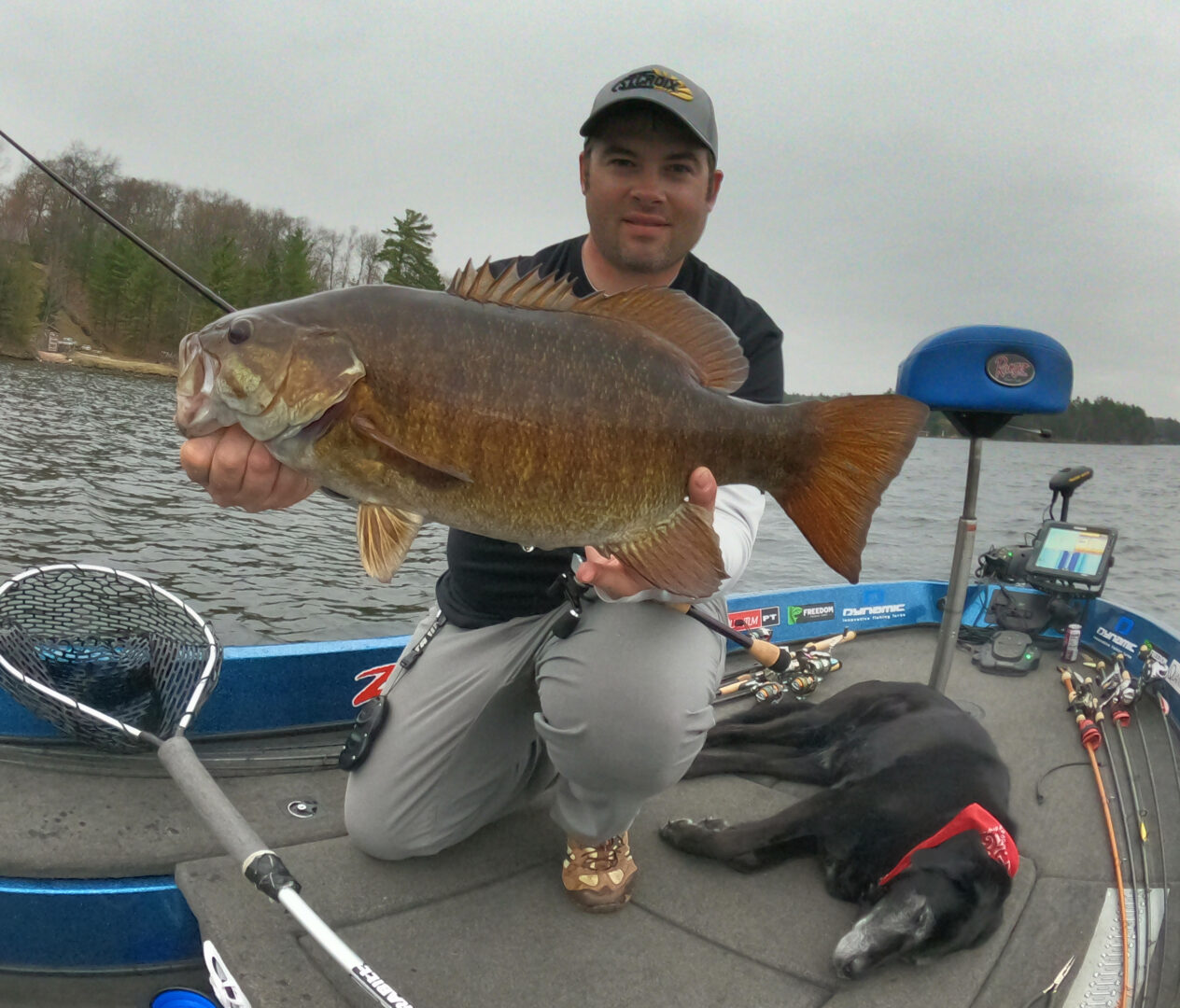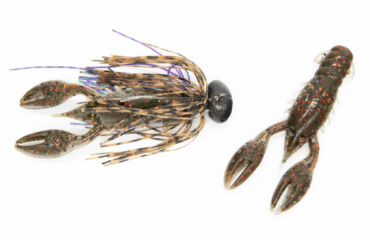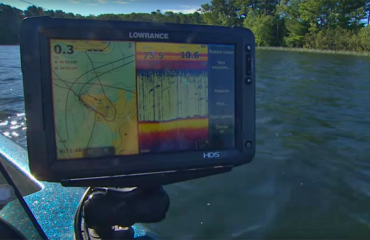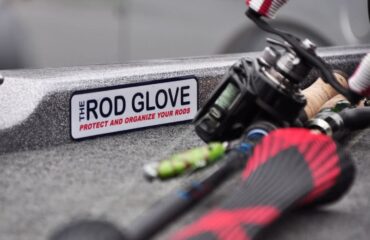Jerkbait Tips for More Spring Smallmouths
For spring smallmouths, suspending jerkbaits have become staples for most anglers. Nearly everyone has one, or a few, rigged up on deck. They are the ticket to early spring success. Few other baits can catch early spring smallmouths better.
While many of them catch fish immediately out from the package, some can require simple modifications to enhance their fishability and catchability. Looking at the big picture, there’s a lot to consider in successful jerkbait fishing besides the brand, lure choice, and action. These considerations include line choice, hook modifications, split rings, rod selection, and more for best presentation delivery.
In Wisconsin and many other Midwestern states not named Minnesota, anglers are able to take advantage of early season fishing immediately after ice-out. The majority will have one or two suspending jerkbaits rigged and ready at ice-out. But just how many of them are detail-oriented and maximize the most out of their baits?
Power in the Pause
When water temperatures approach the mid 40’s, my boat often fishes with a variety of Rapala X-Raps, Husky Jerks and Shadow Raps, Dynamic Lures J-Specs and Z-Specs, Megabass Vision 110’s, Yo-Zuri 3DB’s, and a handful of other brands, shapes, and styles.
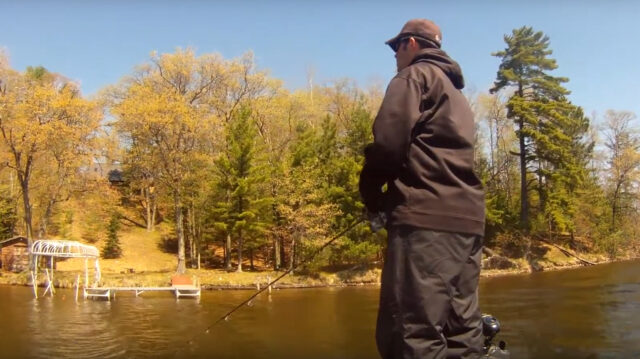
Jerkbaiting success revolves around the pause. Most bass anglers are habitual to fishing suspending jerkbaits too quickly and aggressively. In cold water, aggressive retrieves are a turn-off. Remember the power is in the pause.
Early in the year, less is more. Work too aggressively, the bait will be pulled away from fish, or only catch few. Let it sit and do nothing, fish often smack it.
In my clear northern waters, smallmouths often travel from significant distance to strike. In colder 40-degree waters of April and May, they require some extra time to engage into feeding. It’s quite common to see smallmouths stare at a bait at close range for what seems like an eternity before striking it.
Consider tempting early spring smallmouth with pulling rather than jerking and snapping cadences. Employ long-lining and long pauses between 30 seconds to a minute. It’s deadly when lake smallmouths are lethargic, finicky, or suspending offshore. The Shadow Rap Deep 11, X-Rap 10, Husky Jerks, and Dynamic Lures J-Spec are easy to pull along and maintain their diving depths.
It can be so boring to pause the baits and wait for bites in between jerks. 9 times out of 10, smallmouths strike on the pause.
The Right Line
Line choice can be a science, and there is no real right solution. Whether to cast mono, a braided main line, or straight fluorocarbon, each one suits an angler’s specific preferences.
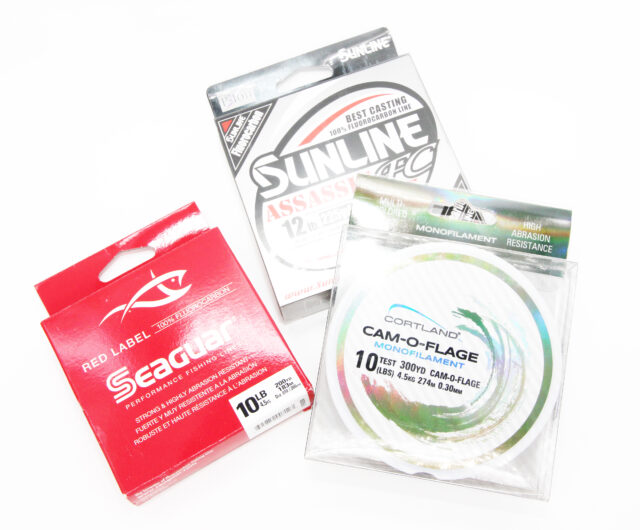
Fish jerkbaits however you can produce the maximum level of action and lure manipulation while still being able to convert hook sets. With spinning set-ups, I always fish low-stretch 8 or 10-pound low-stretch copolymer. Meanwhile with casting set-ups, I run fluorocarbon.
Archaic monofilament and co-polymer lines still serve a purpose. Cortland Camouflage remains my line of choice, though it hasn’t been manufactured since 2015. My St. Croix Victory spinning rods (Lite-Weight and Max Finesse) are built to handle all line types, but they fish mono well. Long distance casting with mono is achievable with a large capacity spool. It also displays excellent line control.
On the other hand, fluorocarbon sinks, which allows baits to dive slightly deeper than advertised. This benefits anglers fishing with pointers and deep divers. But the issue therein lies lack of line and cast control. I strongly recommend against fishing fluoro lines on spinning reels. Line management is non-user-friendly, and it will have a propensity to coil when exposed to sunlight. Also plaguing fluorocarbon is breakoffs. Break-offs during mid-cast, and even during the hook-set are common. Always check for knot-failure and line frays following every catch. Unlike the spinning set-up, fluorocarbon lines can be controlled very well with the baitcasting reel’s line management and cast control. For the pros and cons, fluorocarbon line isn’t the guaranteed solution.
Can braided lines be used then instead? You bet. It floats, and therefore you will need a long fluoro leader attached to help compensate for it. For the best lure delivery and effective hook-setting, you will need a fast-tip, softer medium action spinning or casting rod. I’ve done well fishing a braided main line with the St. Croix Mojo Bass Plastics (MJS71MHF) and Victory Lite-Weight (VTS610MLXF). Be very cautious with braided main lines. I have witnessed too many large fish being lost and unhooked due to anglers using too stiff of rod, heavy line, tight drag settings, and main line to leader knot failure.
Rod Length and Action
Spinning or casting? This question comes down to each angler’s abilities.
Spinning rods will deliver greater casting distance, line and lure control, and bait action. You’ll also be able to fish much faster, or slower. In my boat, a spinning set-up handles everything 3/8 oz. and lighter. I’m a fan of 7-foot MHF rods.
For my every-day jerkbait needs, I turn to casting set-ups.
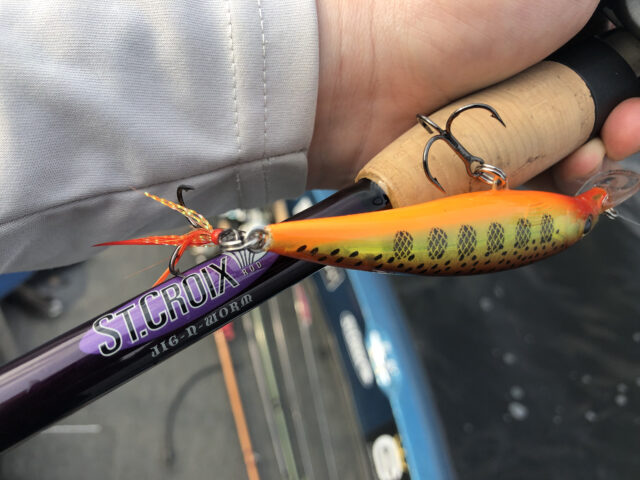
Most anglers would likely turn to lighter action rods with soft tips, such as St Croix’s Victory or Legend Tournament jerkbait rods, both are soft 68MXF models. While I do employ both for a variety of softbait and hardbait strategies, their tip segments of the rod are too whippy for my personal needs and best presentation delivery.
Most suspending jerkbaits I fish are larger, powerful pointer styles, commonly weighing 3/8 to ½ ounce sizes. They also sport lips that enable the baits to cut and dive to a maximum depth. Work them with too light of a rod, the load is too heavy, and you won’t achieve the optimal diving depth to better reach down to fish. Work them with a rod that’s heavy enough to support them, you’ll achieve even greater lure action with diving depth, maximizing the lure’s power and underwater capability.
I am a huge fan of 6-foot 8-to-10-inch MHF casting rods. If you are a bigger guy, the extra power is an asset. The St. Croix Mojo Bass Jig-N-Worm (68MHF) is a criminally underrated and gem of a jerkbait rod. Don’t let this rod’s labeling for marketing purposes fool you. The 6-foot 8-inch length and fast action is what you want for comfortable jerkbait cadence and manipulation. The stiffer backbone is what you need to for hook-sets into larger fish and countering with lure resistance.
I like the shorter length, backbone, and it’s fast MHF action which has a lesser give in the tip section to get the slash baits and cutters to dive and dart even further. Don’t be afraid to fish a MHF like this rod. With the right line such as a low stretch 10 to 12 lb. copolymer or fluorocarbon, you have nothing to worry about on hook-sets or fear of ripping baits out from small-jaws.
Most rods designed for jerkbait fishing have the extra-fast tip segment to counter light bites and nippers, common for cold water fishing. These rods are not ideal for larger deep diving rip baits, but are best for soft and medium diving jerkbaits. With a heavier action jerkbait rod like MHF’s, I’m working bigger baits for bigger fish.
Split Rings
Fresh out of the package, suspending jerkbaits require some additional tuning and tinkering. I’ve learned that subtle modifications can make a significant difference. One of my tricks is to attach extra split rings on suspending jerkbaits to make them suspend level, and even slow-sink.
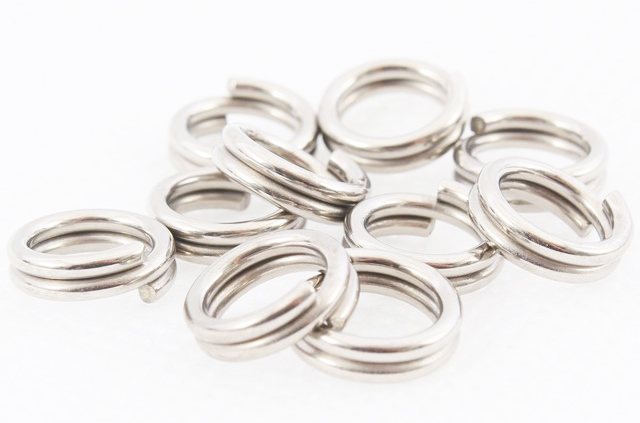
On some larger, girthier baits such as the X-Rap 10 and Dynamic Lures Z-Spec, I’ll add an additional split ring or two for the front hook to get the bait to suspend the way I want it to, or to get the nose down and producer a wider tail kick. I also attach the extra split ring to help balance my suspending jerkbaits and to help them suspend at the angle I prefer.
Be mindful that most smallmouths strike at the bait’s mid-section. This extends the hook for slightly better hook-ups, and allows them to swing more freely. It also makes it harder for fish to get leverage to throw a hook. Some manufacturers are guilty of outfitting their baits with the properly sized corresponding hooks, so the extra split ring also extends the hook without having to purchase larger hooks.
If you’ve ever experienced the heartache and frustration of short strikes or losing a poorly-hooked giant, consider attaching additional split rings.
Hook Modifications
Many suspending jerkbaits are manufactured and packaged without a dressed rear treble hook. Straight from the package, they catch fish but leave lots of them on the table. You can entice additional strikes by modifying those baits and attaching aftermarket teaser tails. I do this often with the Dynamic Lures J-Specs and Lucky Craft Pointers.
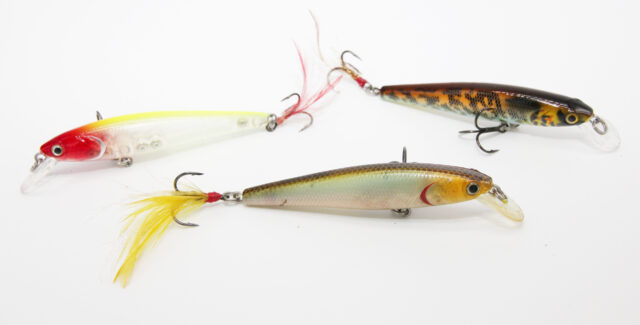
The best smallmouth anglers know how the eye-catching enhancement of feathered hooks can tempt bass that might otherwise lose interest at the last moment. We observe this often with Rapala X-Raps. Their inclusion of a dressed rear hook is a major reason behind this bait’s success. It seals the deal.
Dressed trebles pulsate, flare out, and breathe through the water on every jerk and pause creating a hinging effect. The rear treble swings side to side, creating further attention.
VMC Rapala and Berkley each commercially produce good feathered treble hooks. Some of the best creations, however, are done by fly tiers, many of whom understand the physics and hydrodynamics behind their materials and of their creations. Fly tiers can create with specific hook brands and styles, and often work with higher quality feathers, hair, tinsel and flashabou materials.
For your jerkbait enhancements, make sure the feathers are evenly spread and don’t dwarf the hook, and that the hook size matches the bait’s originals. Too much of both, and it’ll reduce the bait’s cutting and darting action.
Color Choice
Naturally, clear water calls for natural colors. We tend to fish with patterns representing the local forage species, like whites, silvers, chromes, perch, and other translucent shades. This can still be a good rule to follow, but they’re all meant to be broken by smallmouths.
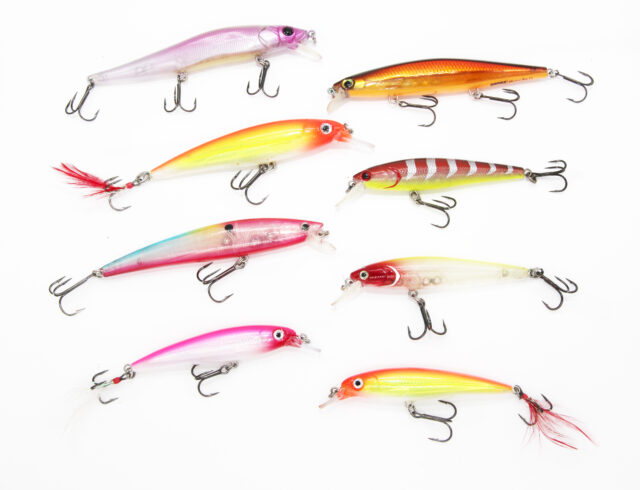
Smallmouths are visual feeders. Ideally, you should take advantage of this by selecting bright, visible colors for clear water. They tend to appreciate the obnoxious and unnatural, tracking them best.
Bright, unnatural colors such as hot heads, clowns, hot pinks, chartreuse and copper oranges consistently outperform realistic, natural colors for me.
Traditional wisdom suggests that these bright colors should only be used in waters with reduced clarity. Bright colors have little effect on the fish in lakes with the clearest water clarity. The erratic action of the retrieve along with its bright color actually attracts fish from a distance and entices them into striking more often than using something that looks more natural and matches the hatch. The only situation I favor using naturalistic colors is when fishing for suspended smallmouths mid-summer and later in the season during the yellow perch migrations.
Deep(er) Divers
When smallmouths are transitioning from their wintering sites towards the shallows, deep divers are the best options.
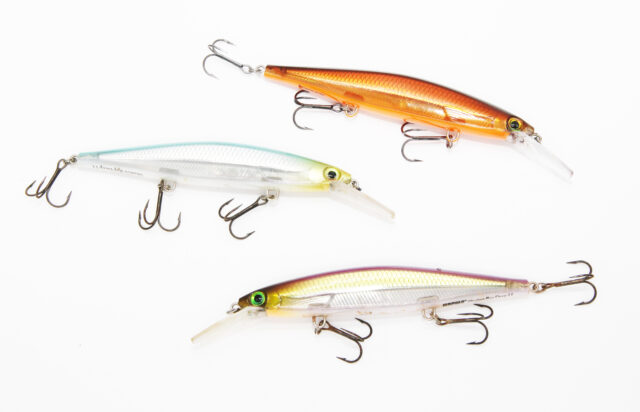
Instead of working shallow running baits with a wide wobble, I favor deep divers like the size-11 Shadow Rap Deep. They are irresistible on a long pause in cold water, and will slowly sink deeper. Instead of jerking, give them more subtle pulls to achieve depth. I’ll wait patiently in between pulls, if necessary, upwards of 30 seconds. Rip downward to push it deeper, and extend the rod upward for it to achieve a larger strike zone.
Deep divers willingly reach 6 to 10-foot depths on the cast, and even deeper when trolling.
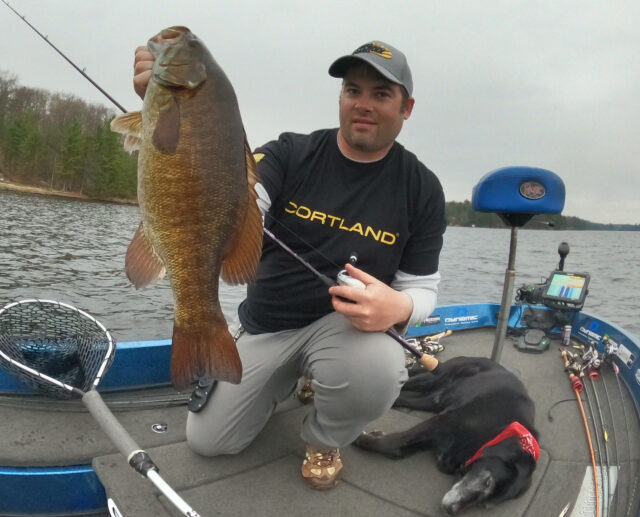
Catch more smallmouths this spring, if compelled to apply a few of these tips. Paying attention to every detail of a suspending jerkbait opens the door to greater capability and maximization of its potential.
Andrew Ragas splits time between the Chicago area and Wisconsin’s Northwoods. Based in Minocqua, WI, he specializes in trophy bass fishing and offers guided trips from May thru October. While big bass is the passion, he dabbles in multi-species as well. He may be visited online at www.northwoodsbass.com


